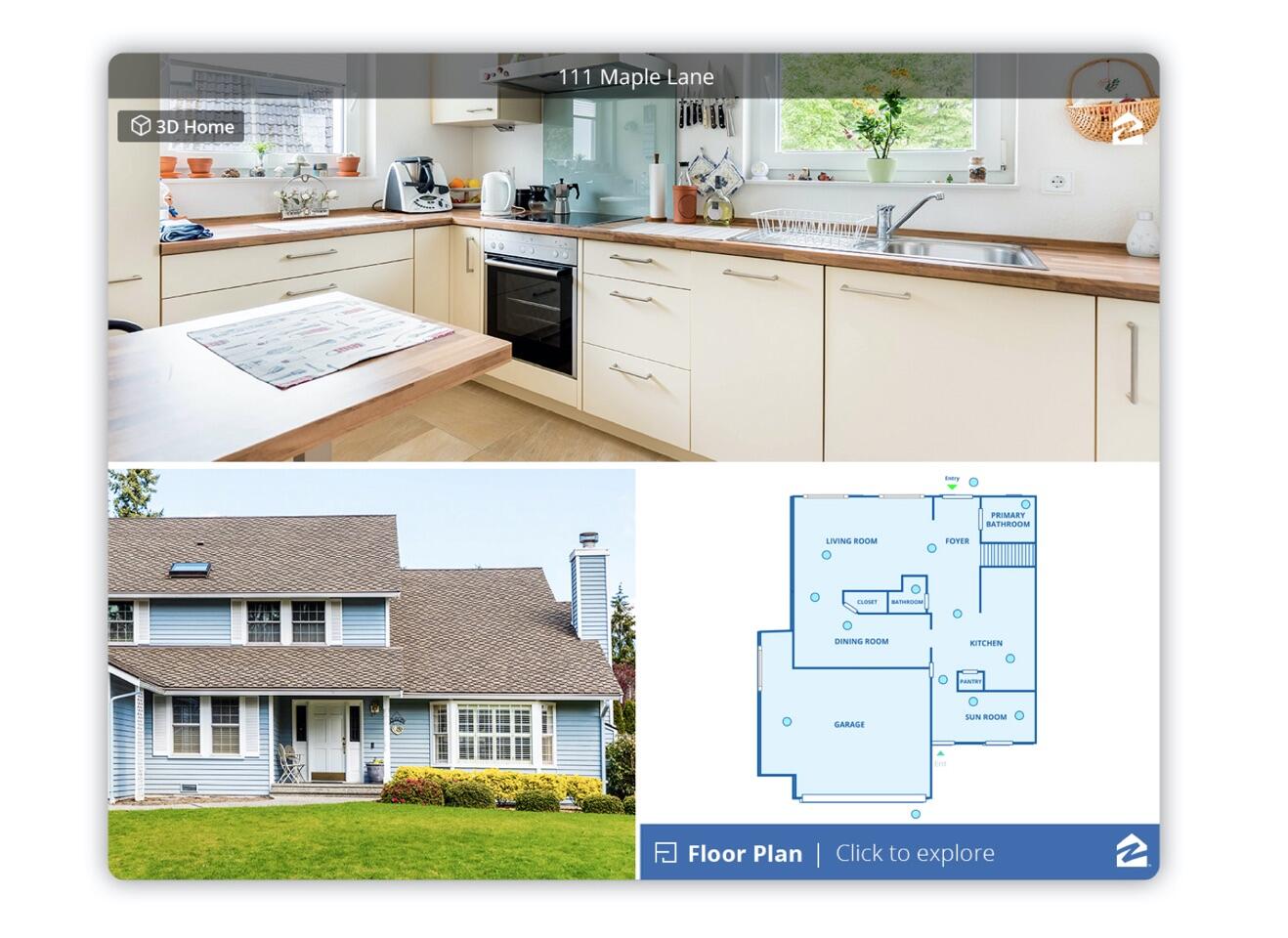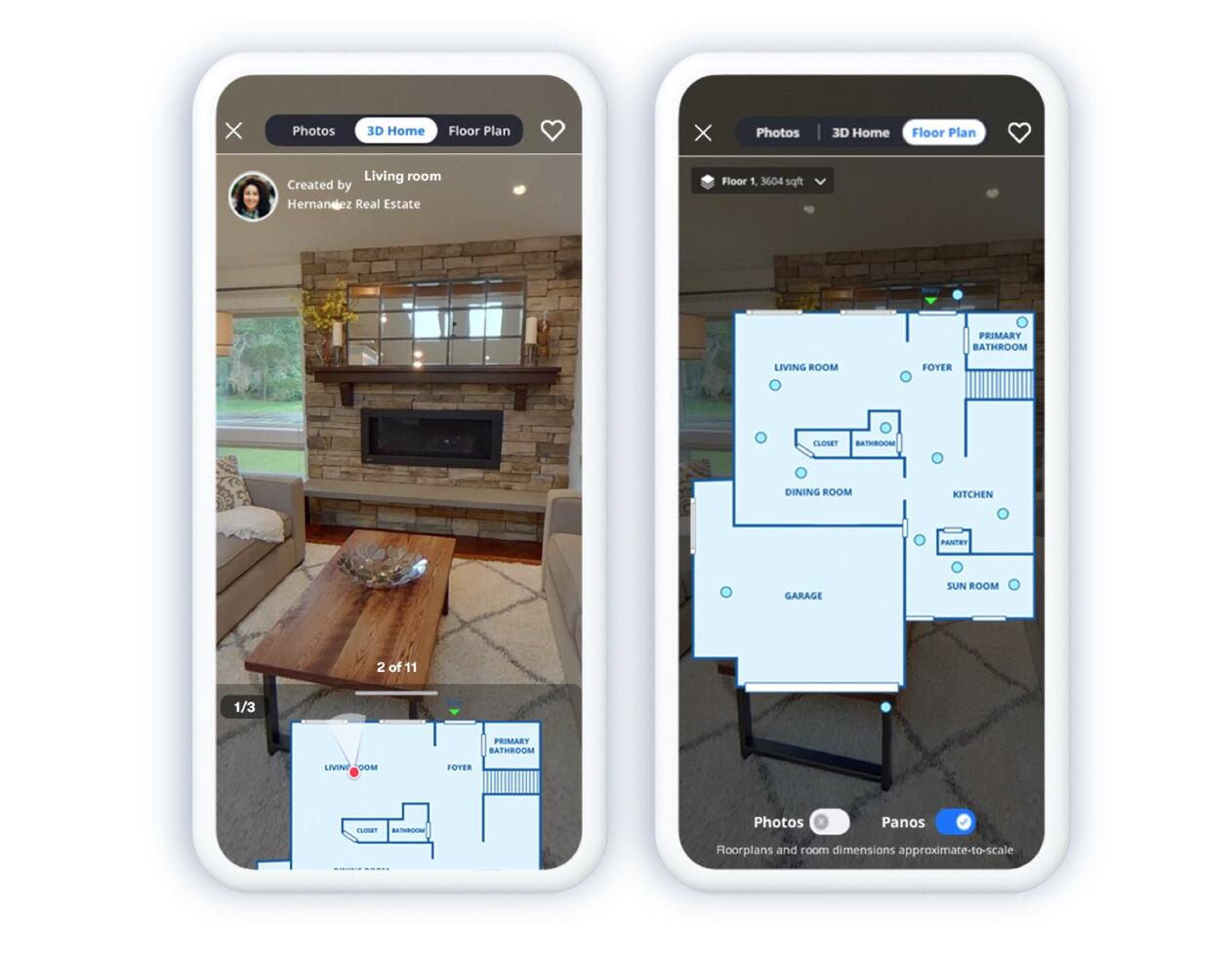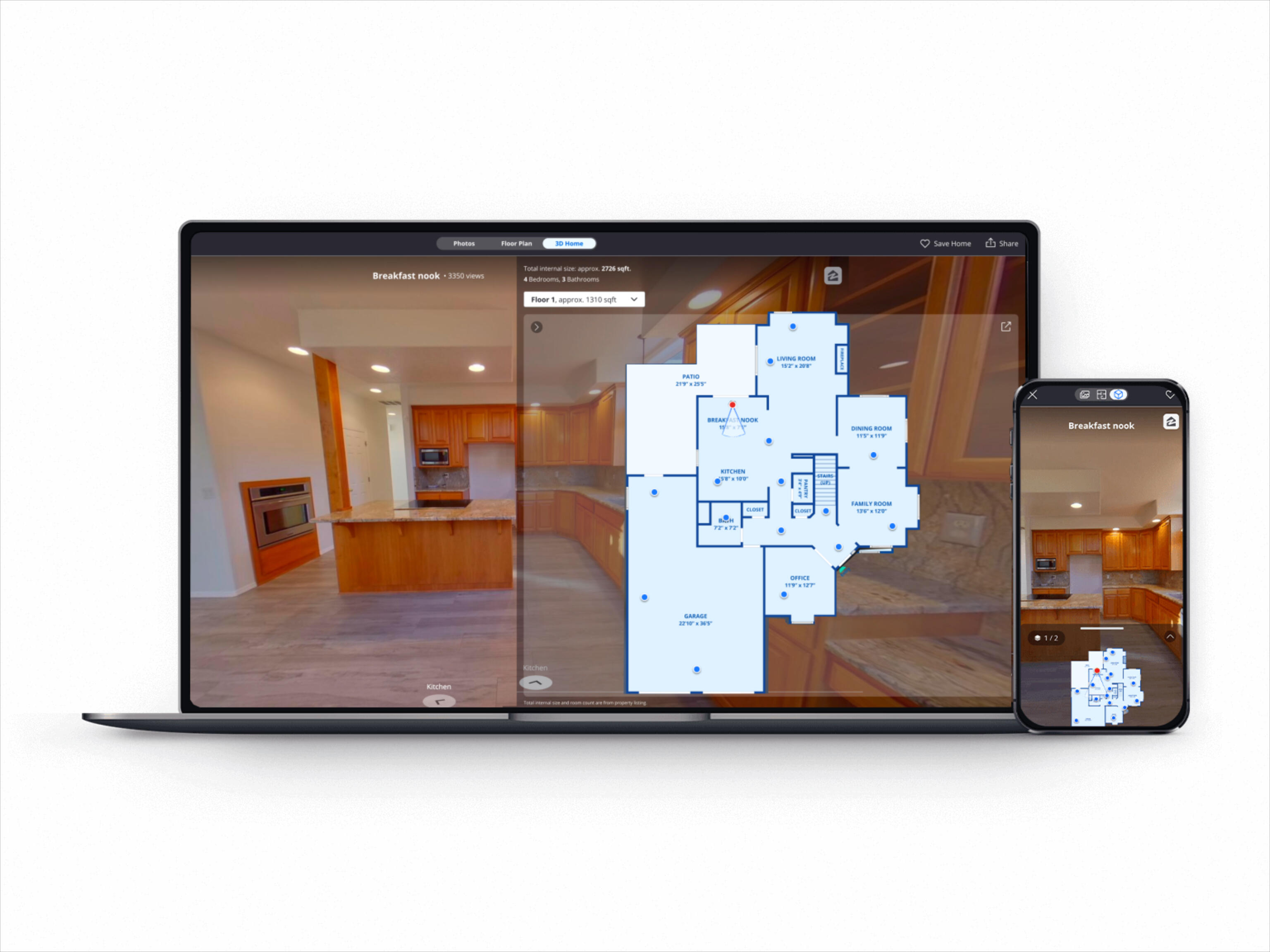AI now added to Zillow 3D Home tours to even more closely mimic an in-person viewing
Next-gen tech merges existing media content such as 3D home tours and detailed listing photos and AI-generated floor plans.

Image: Zillow
The coronavirus wiped out the traditional real estate open house, with brokers’ Tuesday afternoon for colleagues and weekend showing for house hunters. But agents are a wily bunch and in 2020, Zillow 3D home tours published on for-sale listings increased 255{7fdb079a49a3139eb70ba6db044f3bbe0279c46efbc8518eda811287ddf25be9}. While you may not be able to smell the chocolate-chip cookies being baked or cider simmering on the stovetop, Zillow has expanded its 3D technology to give home tours that closely resemble, as much as possible, the real thing. Zillow calls it 3D Home and provides a list of shots so even those who plan to hang a “For Sale by Owner” sign can replicate the critical images.
Potential buyers now have free access to an interactive guide in which they can “more seamlessly navigate a home online.”
A virtual tour provides intimacy (you’re not touring/sharing space with others) as well as the essential safety of true social distancing. The 3D Home tour, still photos and AI-generated floor plan now give a more accurate sense of the home’s flow and space, Zillow says.
Zillow explained the technology: It “uses panoramic photos captured by an agent or photographer with the free 3D Home app and a 360-degree camera, and then applies the company’s computer vision and machine-learning models to generate a 3D Home tour and interactive floor plan,” which includes AI-predicted room dimensions, square footage and the location of the listing photos, relative to the other media. The 3D tour and floor plan are automatically uploaded to the listing and can also be added to the MLS (Multiple Listing Services), embedded on a website or shared via email or social media.

Image: Zillow
Based on data collected by Zillow, the number of 3D Home tours published on for-sale listings more than tripled between 2019 and 2020 because it was recognized as a safer way to tour. Listing agents saw it as a cost-effective way to highlight and share listings in a hot housing market.
Home owners or agents can use the Zillow 3D Home app and a Ricoh 360-degree camera (or any other 360-degree camera) to capture high-quality tours that help listings stand out.
“In the context of floor plans, computer vision allows a machine learning model to look at images of a room to detect its shape, the locations of windows and doors, and how all the rooms in a home relate to each other,” said Josh Weisberg, vice president of Zillow’s rich media experience team.
“Engineers ‘train’ the model with a collection of example images, enabling the machine to generate a schematic drawing with measurements. Combined with deep learning, the machine decides room shape, dimensions and relative positions of rooms on its own. This automates the floor plan production, which gets faster and more accurate as the machine gets ‘smarter’ over time.”
SEE: Top 5 programming languages for systems admins to learn (free PDF) (TechRepublic)
Weisberg said: “This next generation technology brings together rich media content including 3D Home tours, listing photos and AI-generated floor plans into a simple, shared interface. Now, remote shoppers can get an accurate sense of the spatial relationship of rooms in a home that they couldn’t get when viewing these media separately.”
Zillow developed the latest incarnation of 3D tours without a production house, and relying on its own experts. “What’s important to us is creating an integrated experience that helps shoppers better understand the relationship between still photos and the layout of the house, provide a better sense of the space and home features, and improve the overall shopping experience,” Weisberg said. “Being able to localize panoramas onto floor plans represents a huge leap forward for the customer experience.”
The Zillow 3D Home interactive floor plans are free to create currently available in 25 markets, including: Atlanta; Austin, Texas; Charlotte, NC; Cincinnati; Colorado Springs, CO, Dallas-Fort Worth; Denver; Fort Collins, CO; Houston; Jacksonville, FL; Las Vegas; Los Angeles; Miami; Minneapolis-St. Paul; Nashville, TN; Orlando, FL; Phoenix; Portland, OR; Raleigh, NC; Riverside, CA; Sacramento, CA; San Antonio; San Diego; Tampa, FL and Tucson, AZ.

Image: Zillow
Here are the necessary steps to properly capture the panoramic images needed to create the new 3D Home tour and interactive floor plan using Zillow’s latest:
-
Set and keep monopod height at 5 feet (60 inches) for the entire capture (do not change) front yard or front exterior pano; exterior front door pano.
-
Floor plan calibration shot (interior).
-
Choose a large space early on in your capture (ex: foyer, living room or kitchen).
-
Place a floor marker or U.S. Letter paper (8.5×11) on the ground.
-
Should be 1.5-3 feet away from the center base of the monopod (monopod/camera must be on the same level as floor marker).
-
Minimum of one pano per space, which includes all rooms/hallways (taken near the center of room). Exceptions: Large rooms, corridors and L-shaped spaces may require additional panos. (For example, if more than 10 feet away from a wall, take another pano); make sure you can see all corners of the room/space (if you cannot from one pano, then take another).
-
All closets MUST be captured (these are hidden panos): Small closets—open door and capture from outside of closet and label it as a closet; large closets—place monopod/camera inside to capture and label as closet.
-
Hidden panos: No need to leave the room—these are panos that you do not want to show in the public tour (ex: garages, storage, small/utility closets, etc.); if you know the pano is going to be hidden in the tour, and want to show what’s around a corner, say, there’s no need to leave the room (a time saver). Stand a few feet back and don’t, of course, block the area you’re trying to show.
-
In general, the overall principle is to show every space, including hallways, closets, utility closets, pantries, garages, and every corner of those spaces if possible.
-
No doorway shots (a capture on each side of every doorway is no longer needed).
-
Exterior backyard and/or patio pano.
-
Make sure the entire home has been captured before finishing tour in 3DH app; frequently missed—hallways, small bedrooms or offices, garages, closets (bedroom, linen, pantry, utility, etc.), front/back exteriors.
-
Possible calibration errors: Missing calibration shot altogether; floor marker or paper on different level than the tripod; wrinkled paper, folded paper, wrong sized piece of paper, marker/paper placed too close or too far.









